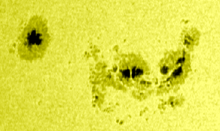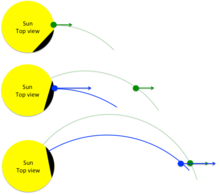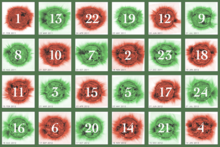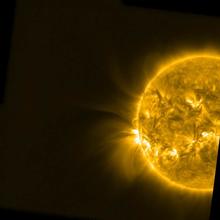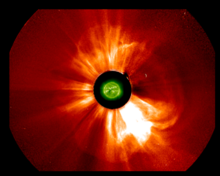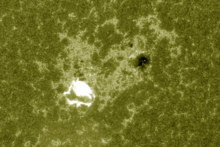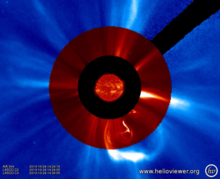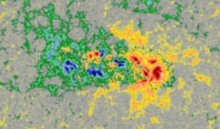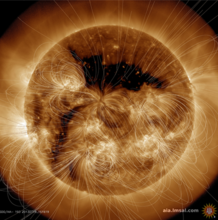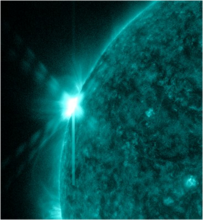news
Submitted on 2014-01-02
During 2013, long stretches of solar inactivity alternated with brief spurts of high flaring activity levels. The periods of solar calm featured numerous filament and prominence eruptions, with so many spectacular events they could easily fill this review. There were 12 X-class solar flares, almost as many as 2011 and 2012 combined. Yet, only 5 sunspot regions were responsible for these extreme explosions on the Sun, and most of them took place during the latter part of 2013.
Submitted on 2013-12-19
On December 8 and 13, something particularly interesting happened in the solar wind: ACE in situ solar wind data showed a shock and both times the shock was driven by a coronal hole. Shocks driven by a coronal mass ejection are common. But this was shocking news.
Fast catches up with slow
Submitted on 2013-12-13This news item was created by the P2SC-team and is available here.
Submitted on 2013-11-29
This news item was written by Dan Seaton and the P2SC-team.
Comet ISON raced past the Sun on November 28, but left no clues about its structure — or the structure of the solar corona — for extreme-ultraviolet (EUV) telescopes like SWAP that had been turned towards the unique comet in the hope of capturing images of its passage through perihelion.
Submitted on 2013-11-13
Last week, the Sun produced 3 X-class solar flares. "X" is short for "eXtreme", which means these flares are very strong. These X-class flares were produced by the complex and big sunspot group NOAA 1890. Pictures underneath were made by Belgian amateur solar observers on 9 November and give a good view on the extent and complexity of this sunspot group.

Submitted on 2013-11-06
Every year, many companies organize activities for their personnel in order to have some fun and to strengthen the team spirit. Late October, some sunspot groups got the same idea. However, their idea of a fun team-building activity was quite different: Together, they wanted to destroy a nearly million km long solar filament. This spectacular movie reveals how they did it.

Submitted on 2013-10-31
No, Beta-Gamma-Delta (BGD) is not some high-school prom reunion, but one of the possible magnetic classifications of a sunspot group. These classifications play a major role in determining whether or not a sunspot group is up to significant flare activity.
Submitted on 2013-10-23
Coronal holes (CH) are regions in the hot solar atmosphere ("corona") where the plasma density at that temperature is very low compared to its surroundings, and thus they look like dark shapes in the corona. Linked to unipolar magnetic fields stretching into space, they are the source of the high-speed solar wind and can create geomagnetic disturbances.
Submitted on 2013-10-16
On 9, 11 and 13 October, the Sun produced an M-class solar flare each day. These three medium-sized eruptions were the first since mid-August, ending a nearly comatose period of solar activity.

Pages
Zircon - This is a contributing Drupal Theme
Design by
WeebPal.

